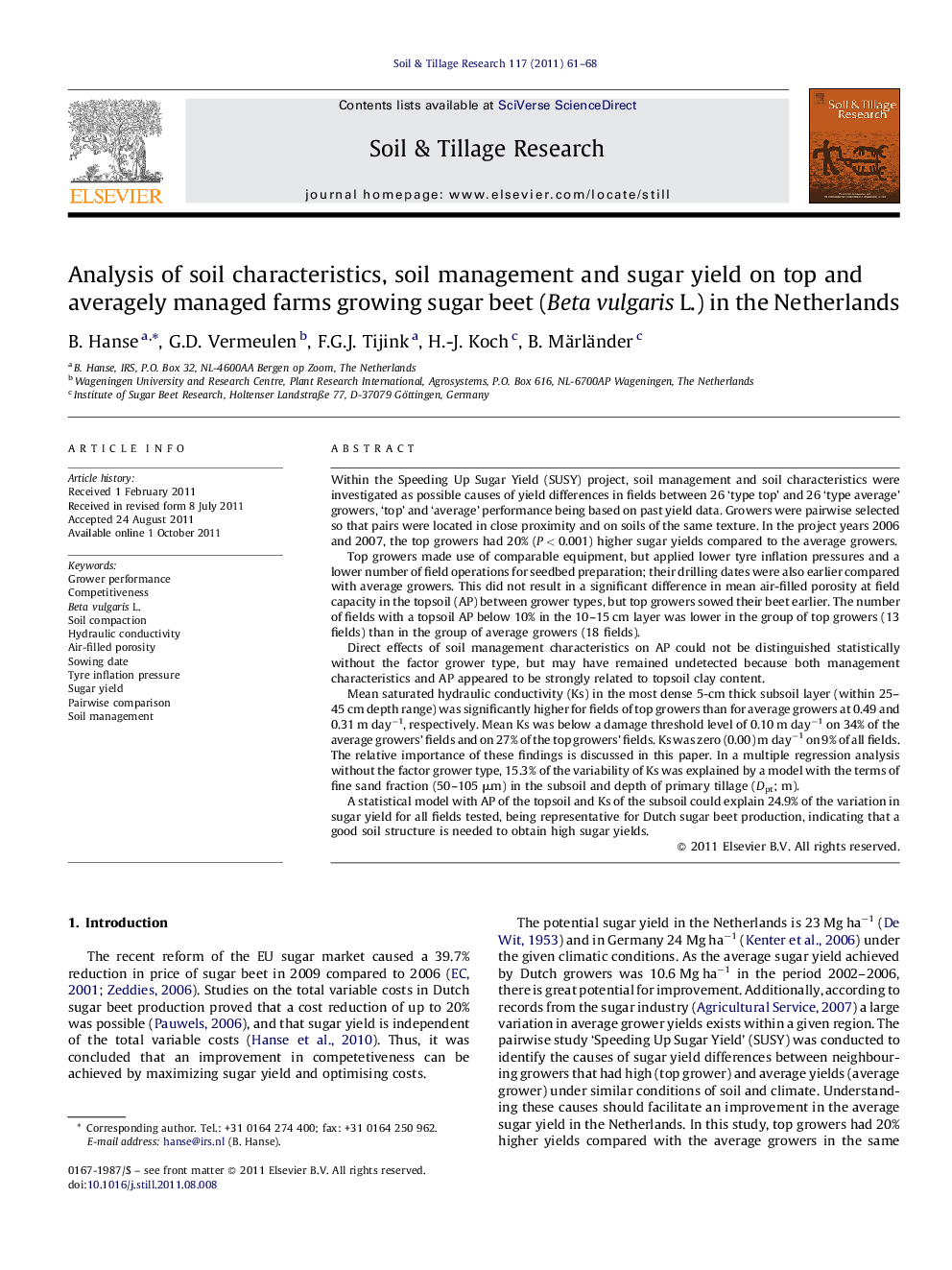| Article ID | Journal | Published Year | Pages | File Type |
|---|---|---|---|---|
| 306037 | Soil and Tillage Research | 2011 | 8 Pages |
Within the Speeding Up Sugar Yield (SUSY) project, soil management and soil characteristics were investigated as possible causes of yield differences in fields between 26 ‘type top’ and 26 ‘type average’ growers, ‘top’ and ‘average’ performance being based on past yield data. Growers were pairwise selected so that pairs were located in close proximity and on soils of the same texture. In the project years 2006 and 2007, the top growers had 20% (P < 0.001) higher sugar yields compared to the average growers.Top growers made use of comparable equipment, but applied lower tyre inflation pressures and a lower number of field operations for seedbed preparation; their drilling dates were also earlier compared with average growers. This did not result in a significant difference in mean air-filled porosity at field capacity in the topsoil (AP) between grower types, but top growers sowed their beet earlier. The number of fields with a topsoil AP below 10% in the 10–15 cm layer was lower in the group of top growers (13 fields) than in the group of average growers (18 fields).Direct effects of soil management characteristics on AP could not be distinguished statistically without the factor grower type, but may have remained undetected because both management characteristics and AP appeared to be strongly related to topsoil clay content.Mean saturated hydraulic conductivity (Ks) in the most dense 5-cm thick subsoil layer (within 25–45 cm depth range) was significantly higher for fields of top growers than for average growers at 0.49 and 0.31 m day−1, respectively. Mean Ks was below a damage threshold level of 0.10 m day−1 on 34% of the average growers’ fields and on 27% of the top growers’ fields. Ks was zero (0.00) m day−1 on 9% of all fields. The relative importance of these findings is discussed in this paper. In a multiple regression analysis without the factor grower type, 15.3% of the variability of Ks was explained by a model with the terms of fine sand fraction (50–105 μm) in the subsoil and depth of primary tillage (Dpt; m).A statistical model with AP of the topsoil and Ks of the subsoil could explain 24.9% of the variation in sugar yield for all fields tested, being representative for Dutch sugar beet production, indicating that a good soil structure is needed to obtain high sugar yields.
► The fields of higher yielding top growers had higher Ks and thus less subsoil compaction compared to the average growers. ► Top growers made better use of the same equipment at seedbed preparation. ► AP depended strongly on topsoil clay content. ► Depth of primary tillage and the nature of the soil (sand content subsoil) explained the Ks by 15.3%. ► In dependency of subsoil fine sand content and sowing date, Ks and AP explained 24.9% of variance in sugar yield.
